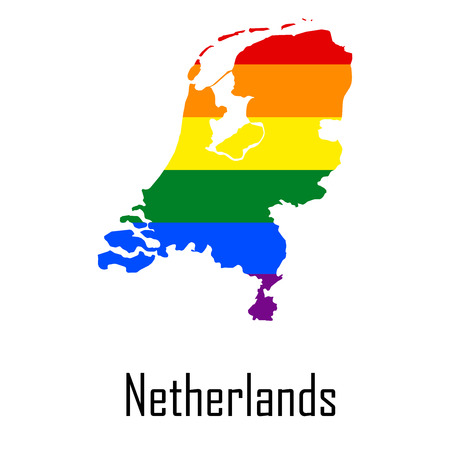In the Netherlands, Attitudes Toward Homosexuality Are More Mixed Than You Might Think
May 16, 2018 by Justin Lehmiller
The Netherlands is often seen as a utopia for people who are attracted to the same sex—and this view is perfectly understandable when you look at how homosexuality has historically been treated under the law. For example:
-Same-sex behavior has been legal nationwide since 1811 (contrast that with 2004 in the United States, when the US Supreme Court made their landmark ruling overturning state sodomy laws in Lawrence vs. Texas).
-Sexual minorities have been protected from discrimination in employment since 1993 (by contrast, no federal law exists in the US prohibiting employment discrimination based on sexual orientation).
-The Netherlands was the first country to legalize same-sex marriage, which happened in 2001 (by contrast, the US didn’t do this until 2015 in the Supreme Court case of Obergefell vs. Hodges).
However, while homosexuality is something that has been tolerated and accepted in the Netherlands far longer than in has in other parts of the world, this doesn’t necessarily mean that everyone in the Netherlands is accepting of sexual minorities or that sexual minorities here are immune from the effects of prejudice and discrimination.
For example, a recent survey of Dutch persons found that 1 in 3 respondents said the sight of two men kissing in public is offensive; likewise, 1 in 4 said the sight of two women kissing is offensive (by contrast, just 1 in 10 said the sight of a man and woman kissing publicly is offensive).
Likewise, about 1 in 5 Dutch persons disapprove of same-sex marriage—and when you start looking at certain subpopulations, that disapproval rate increases dramatically. For instance, among immigrants from Somalia and Morocco (countries where many in the Netherlands have immigrated from in recent years), rates of disapproval are 70% or higher. Also, outside of the major population centers (i.e., cities like Amsterdam, where I’m teaching my study abroad course), there’s a “bible belt” in the Netherlands where attitudes tend to be more sexually conservative.
As you can see, there’s still a significant amount of homophobia in the Netherlands, which helps to explain why thousands of anti-gay hate crimes occur each year in this country. This also helps to explain research finding that lesbian, gay, and bisexual individuals in the Netherlands have higher rates of physical and mental health issues than heterosexuals—in other words, LGBTQ folks still experience the effects of minority stress, which refers to the chronic stress that stems from the reality of experiencing prejudice due to a minority identity.
In short, while tolerance, acceptance, and legal equality for sexual minorities has certainly happened at a much faster pace in the Netherlands compared to other parts of the world, it’s not necessarily the case that homosexuality is universally accepted. Anti-gay bias still exists here to some degree and those who are the targets of it experience the same negative effects that they do elsewhere.
Follow the blog to keep up on what we’re learning during our study abroad trip, and follow our daily adventures or live vicariously through us on Twitter @JustinLehmiller and Instagram @JustinJLehmiller
Want to learn more about Sex and Psychology ? Click here for previous articles or follow the blog on Facebook (facebook.com/psychologyofsex), Twitter (@JustinLehmiller), or Reddit (reddit.com/r/psychologyofsex) to receive updates.
Image Source:123RF/Yaroslav Melnik
You Might Also Like:

Dr. Justin Lehmiller
Founder & Owner of Sex and PsychologyDr. Justin Lehmiller is a social psychologist and Research Fellow at The Kinsey Institute. He runs the Sex and Psychology blog and podcast and is author of the popular book Tell Me What You Want. Dr. Lehmiller is an award-winning educator, and a prolific researcher who has published more than 50 academic works.
Read full bio >


